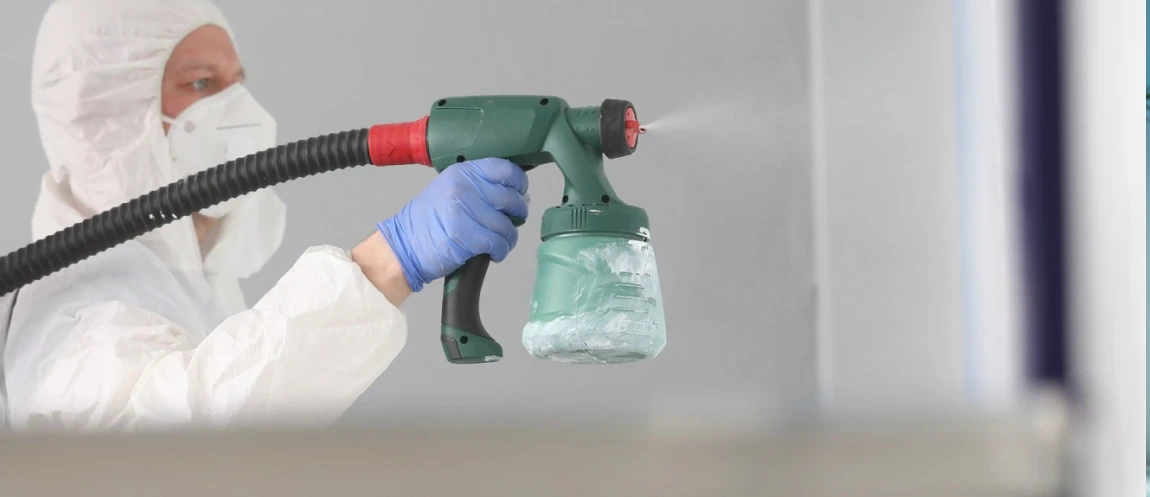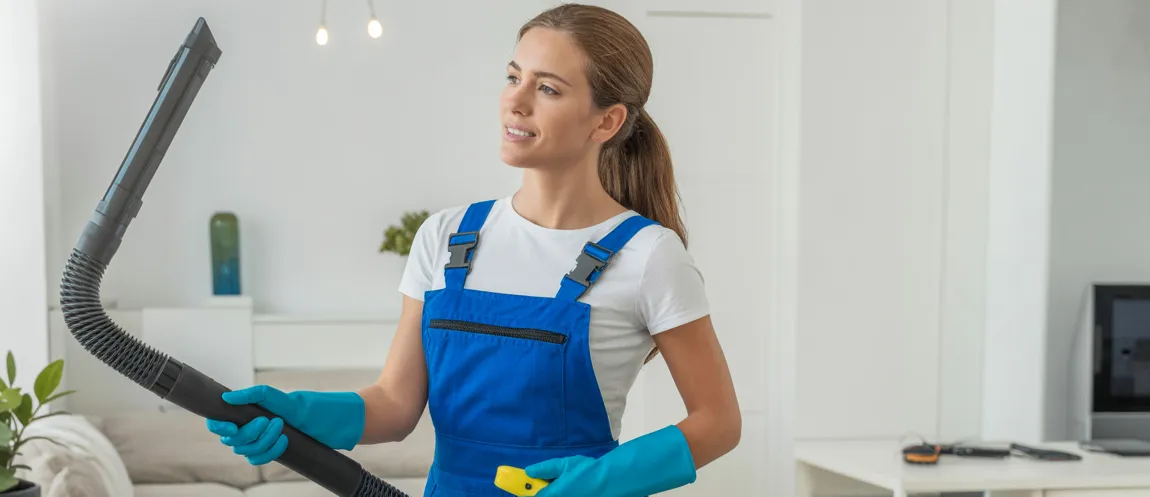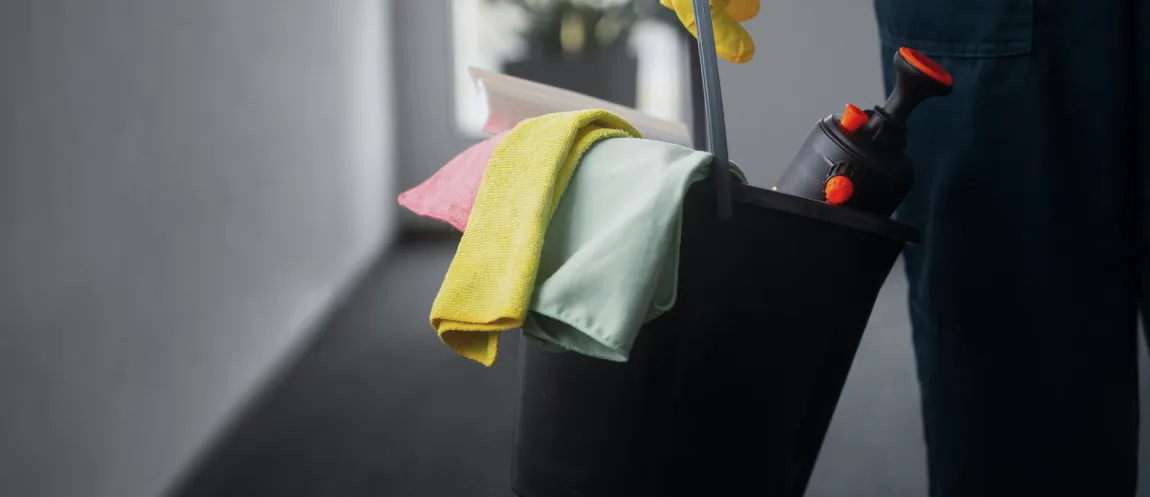In the wake of global health crises, maintaining a clean and safe environment has become a top priority in all types of facilities, not just hospitals. Hospital-grade disinfecting, once exclusive to healthcare settings, is now being recognized as an essential measure in non-medical facilities like offices, schools, retail spaces, and public buildings. Non-medical facilities, where large groups of people gather, can be breeding grounds for bacteria, viruses, and fungi, which can spread quickly and cause serious health issues.
Implementing disinfecting standards in these settings helps maintain a higher standard of cleanliness and hygiene, ensuring that staff, customers, and visitors are in a safe environment. For businesses in Brooklyn, partnering with a professional cleaning service Brooklyn ensures that hospital-grade disinfecting practices are incorporated, safeguarding your workspace and promoting a healthier, safer atmosphere for everyone.
What Is Hospital-Grade Disinfectant?
Hospital-grade disinfectants are specially formulated cleaning agents registered with the EPA for their ability to eliminate a wide range of pathogens, including some of the most dangerous viruses and bacteria. These products are designed to meet stricter standards of efficacy than regular household or commercial cleaners, making them perfect for environments where infection control is critical.
Hospital-grade disinfectants are proven to kill:
- Bacteria: Includes harmful strains like Staphylococcus aureus (which causes infections) and Pseudomonas aeruginosa (linked to respiratory and skin infections).
- Viruses: Highly effective against a wide range of viruses, including those similar to COVID-19.
- Fungi and Mold: Helps prevent the spread of mold and other fungal pathogens that thrive in damp environments.
- Antibiotic-Resistant Pathogens: These disinfectants target and neutralize hard-to-kill, antibiotic-resistant organisms that are often found in public spaces.
Why Use Hospital-Grade Disinfecting in Non-Medical Facilities?
Enhanced Infection Control
High-traffic areas like offices, schools, and retail environments are often home to an array of pathogens, which can spread quickly among people. Hospital-grade disinfecting is designed to eliminate harmful microorganisms before they can cause illness, preventing the spread of viruses, bacteria, and fungi.
By focusing on high-touch surfaces, hospital-grade disinfectants can help reduce the risk of common infections such as the flu, colds, and skin conditions, which are more likely to spread in public spaces.
Public Health and Safety
Using hospital-grade disinfectants is a clear indication that safety is a priority for businesses and institutions. As concerns about public health rise, these disinfectants help reassure staff, customers, and visitors that the facility is taking the necessary steps to maintain a clean, safe environment. For businesses in Brooklyn, investing in professional commercial cleaning services Brooklyn ensures that high hygiene standards are met, fostering trust and providing peace of mind to everyone who steps through the door.
During flu season, outbreaks, or other health emergencies, hospital-grade cleaning can serve as an extra layer of protection, promoting public trust in your facility’s commitment to hygiene.
Broader Spectrum of Efficacy
Regular cleaning products may only target a limited range of pathogens, but hospital-grade disinfectants are designed to fight against a broader spectrum of harmful microorganisms. This includes:
- Antibiotic-resistant bacteria
- Emerging viruses
- Fungi, molds, and mildew
These disinfectants offer a more comprehensive approach to cleanliness, making them ideal for facilities that want to go above and beyond to protect their patrons and staff.
Odor and Mold Control
Many hospital-grade disinfectants also address unpleasant odors caused by bacteria and mold, contributing to a fresher, healthier environment. In facilities with high humidity or limited ventilation, mold and mildew can be a constant concern. Hospital-grade cleaning solutions not only remove these nuisances but also help prevent future growth.
Best Practices for Hospital-Grade Disinfection in Non-Medical Settings
Product Selection
- Choose EPA-registered hospital-grade disinfectants that are formulated to eliminate a wide range of pathogens.
- Follow label instructions carefully for dilution, application, and contact time (often 1-10 minutes for maximum efficacy).
Surface Preparation
- Clean surfaces first with soap and water to remove dirt, grease, and grime before applying the disinfectant. Dirt and debris can reduce the disinfectant’s effectiveness.
Application Protocols
- Prioritize high-touch areas like:
- Door handles
- Light switches
- Desks and workstations
- Keyboards and communal devices
- Restroom fixtures
- Systematic application: Apply disinfectant from cleaner to dirtier areas, and from top to bottom, to prevent cross-contamination.
- Let surfaces air-dry if instructed by the product label, as this enhances disinfectant efficacy.
Staff Training
- Proper training for cleaning staff: Ensure that staff are familiar with safe handling techniques for hospital-grade disinfectants and wear the necessary personal protective equipment (PPE).
- Adherence to protocols: Train staff to follow the manufacturer’s instructions for optimal safety and effectiveness.
Frequency
- Adjust cleaning frequency based on foot traffic. High-touch areas in busy places like offices or schools may need cleaning multiple times per day, while less trafficked areas can be cleaned less frequently.
Monitoring and Compliance
- Regular reviews and updates: Ensure that your facility regularly revisits cleaning protocols, especially in response to evolving health guidelines and industry standards.
Safety and Regulatory Considerations
When used according to guidelines, hospital-grade disinfectants are safe for use in occupied spaces. Many modern products are designed to be allergen-free, low in volatile organic compounds (VOCs), and free from harsh chemicals.
Be sure to:
- Follow manufacturer’s guidelines: Adhere to the recommended dilution rates, application methods, and safety protocols.
- Avoid unnecessary chemicals: Don’t use higher-level disinfectants or sterilants for non-critical surfaces to minimize risks.
Upgrade Your Facility’s Cleanliness with Hospital-Grade Disinfecting
For non-medical facilities, hospital-grade disinfecting is no longer just a luxury; it’s a necessity. It provides a level of cleanliness that not only enhances public safety but also demonstrates a commitment to maintaining a healthy environment.
By using EPA-registered products and adhering to strict cleaning protocols, non-medical spaces can achieve and maintain hospital-level hygiene, offering peace of mind to all who enter.
DLL Cleaning Services specializes in providing hospital-grade disinfecting to ensure your facility meets the highest standards of cleanliness. Why not have protection for everyone in your space?
FAQs
What is the difference between hospital-grade and regular disinfectants?
Hospital-grade disinfectants are formulated to eliminate a broader range of pathogens, including antibiotic-resistant bacteria, viruses, and fungi, providing more effective infection control than standard cleaners.
How often should I disinfect my workplace?
High-traffic areas should be disinfected multiple times a day. For less frequently used spaces, once-a-day cleaning may suffice, but this depends on the foot traffic and usage patterns.
Are hospital-grade disinfectants safe to use in occupied spaces?
Yes, as long as the product is used according to the manufacturer’s instructions. Many hospital-grade disinfectants are low in harmful chemicals, allergen-free, and safe for occupied areas when applied correctly.
Can DLL Cleaning Services help with hospital-grade disinfecting?
Yes, DLL Cleaning Services offers expert hospital-grade disinfecting services, ensuring your facility remains clean and safe, with the highest standards of hygiene.
What types of facilities benefit from hospital-grade disinfecting?
Offices, schools, retail spaces, public buildings, and any high-traffic areas can benefit from hospital-grade disinfecting to reduce pathogen spread and enhance safety.




